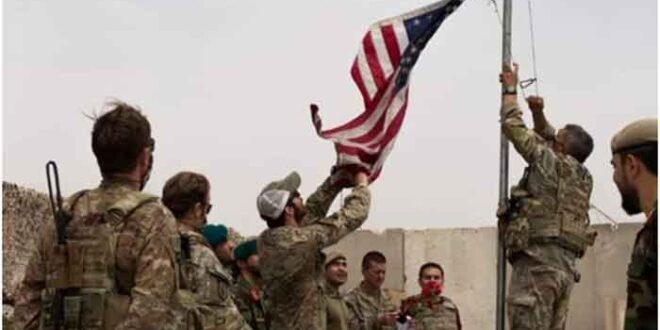But the US withdrawal is no longer conditions-based, which means the Taliban have achieved their number one objective without bending on any of the key issues such as their continuing links with the al-Qaeda or their agenda to reestablish the Islamic Emirate…
Apparently, all that the US extracted out of the Taliban is a tacit understanding that the western troops will be allowed to make an orderly exit…
As the US and NATO troop withdrawal from Afghanistan enters the second week, certain trends are appearing on the security front as well as at the diplomatic and political level. The graph of violence is rising while there is also greater clarity about the US’ game plan.
As could be expected, the Taliban campaign of targeted killings continues, directed against government workers, activists, journalists and the public at large with a view to silencing critical voices. The Taliban are not genuinely interested in power-sharing.
But the US withdrawal is no longer conditions-based, which means the Taliban have achieved their number one objective without bending on any of the key issues such as their continuing links with the al-Qaeda or their agenda to reestablish the Islamic Emirate.
In effect, the Biden administration’s retraction from the Doha Pact to unilaterally extend the timeline for troop withdrawal from May 1 to September 11 put the US negotiators on the defensive.
Apparently, all that the US extracted out of the Taliban is a tacit understanding that the western troops will be allowed to make an orderly exit.
This would have implications for the period up to September 11. At issue is the durability of the US-Taliban understanding that the latter would not attack the retreating foreign troops. So far that understanding is holding. But how this pans out, remains to be seen. The Taliban would conceivably expect the US to reciprocate by terminating all military operations against it. These are early days.
The VOA claimed that US forces were actively carrying out airstrikes against Taliban fighters in southern Afghanistan’s Helmand province three days ago while Pentagon declined to offer specifics, though a spokesman said that “there’s still quite a bit of robust capability” at the disposal of US commanders on the ground. “To the degree we can, as we transition out, we’re going to continue to try to support Afghan national security forces in the field,” Pentagon press secretary John Kirby told reporters.
At issue here is the extent of heavy US air support for the Afghan government forces battling the Taliban. So far, according to reports, the growing Taliban offensive has not triggered a US reaction as such. When asked about this at a press briefing at the Pentagon on Thursday, both US Defence Secretary Lloyd Austin and the Chairman of the Joint Chiefs of Staff General Mark Milley were evasive and declined to give a categorical reply either way.
Austin said, “We will continue to support them after we retrograde, with funding, with over the horizon logistics… Once we’ve left, again, our focus is on providing — or maintaining a C.T. (counterterrorism) capability over the horizon and supporting the Afghans with — with monetary support and over-the-horizon logistics, where possible.”
A report in the Washington Post on May 8 Saturday estimated that the Taliban is “testing for defensive weak points and assessing the (Afghan) government’s capacity to provide air support as US and NATO forces withdraw. The attacks are largely focused on towns in provinces where the Taliban has had a strong presence for years… Recent militant attacks have allowed the fighters to encroach closer to those capitals, overtaking perimeter outposts and villages… In most cases, Taliban fighters have tightened their grip on cities or moved closer to the city limits. Some officials and civilians say Afghan forces abandoned their posts as soon as the Taliban assaults began.”
What emerged from May 7 Friday’s Pentagon briefing is that the US mission in Afghanistan is being calibrated toward providing logistic support to the Afghan air force “over the horizon” (from nearby bases in Gulf, etc.) and extend continued maintenance support. Much would depend on the Taliban’s road map and plan of action. Importantly, Taliban’s political office in Doha said the group has not issued any new military orders. This would mean that the Taliban’s current offensive is aimed at gaining more leverage at the negotiating table rather than lay the groundwork for an eventual military takeover. But then, the two are not irreconcilable.
Indeed, the U.S.-Europe Communiqué on the Afghan Peace Process issued on May 7 Friday jointly by the US, European Union, France, Germany, Italy, NATO, Norway, and the UK all but visualises the inevitability of an interim government in Afghanistan “that can lead to an inclusive and legitimate government and a just and durable settlement,” which of course is not conceivable except under with the Taliban playing the lead role as the most cohesive political entity in a highly fragmented polity, exercising control over half of the country as it is.
Trust the Taliban to continue to co-opt disgruntled members of the country’s political elite by engaging them in direct talks, including not only powerful former warlords but even eminent figures such as former president Hamid Karzai, for reaching a political settlement on palatable terms that would gain for Taliban a significant chunk of power in Kabul.
Interestingly, the US-Europe Communiqué reads more like a “farewell note”. Indeed, it has been drafted after consultations with the Afghans.
Its salience lies in its reiteration that “all parties”, “all sides” (meaning, both Ghani government and the Taliban) are expected to “to take immediate and necessary steps to reduce violence”; “to avoid civilian casualties”; “to create an environment conducive to reaching a political settlement”; “to respect their obligations under international humanitarian law in all circumstances” and so on.
Most important, the Communiqué “Underscored that the Taliban and the Government of the Islamic Republic must fulfill their counterterrorism commitments including to prevent al-Qaida, Daesh, or other terrorist groups and individuals from using Afghan soil to threaten or violate the security of any other country…” Isn’t it an oblique reference here to cessation of terrorist strikes against Pakistan from Afghan soil as well?
This is crucial as there are many shady actors operating on the Afghan chessboard. While President Ashraf has rushed to blame the Taliban for the latest horrific attack on a girl’s school in Kabul, a more nuanced picture is emerging. Taliban of course forcefully rejected Ghani’s allegation and the western analysts are endorsing him either.
The Islamic State has previously claimed attacks against Shias in the same area last year, including two on education facilities that killed 50 people.
The point is, the Islamic State is a mystery wrapped in enigma and it is a rubric, under which rogue elements within the government could also be operating who are stakeholders in the “forever war”.
 Eurasia Press & News
Eurasia Press & News




